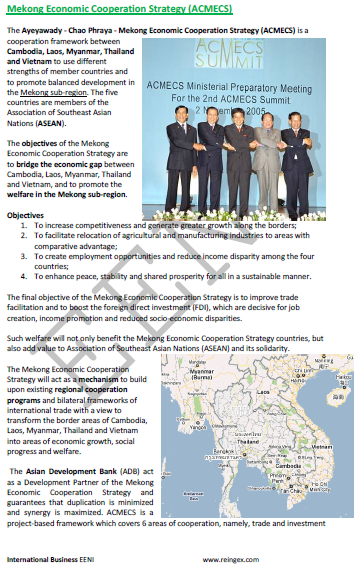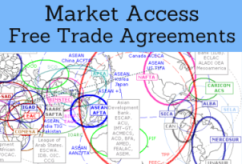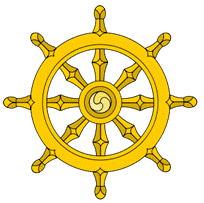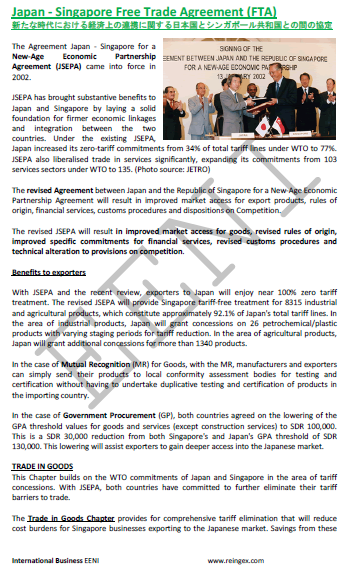Economic Area, Buddhist Civilization. Mahayana

Buddhist Economic Area, Integration, Trade Agreements, ASEAN, Japan
The module “Buddhist Economic Area” consists of eight parts:
- Main features of the Economic Area of Buddhist Civilization
- Buddhism and the Buddhist Economic Area
- Economic Profile of Buddhist Countries
- Buddhist businesspeople
- The Asian economic integration of Buddhist Civilization (Economic Organizations, Trade Agreements)
- The Buddhist Civilization and the Association of Southeast Asian Nations (ASEAN)
- Interactions of Buddhist Civilization with the other civilizations
- Economic institutions and trade agreements related to the Buddhist Civilization
Sample:
The objectives of the subject “Buddhist Economic Area”:
- To identify the characteristics of Buddhist Economic Area
- To analyze the influence of Buddhism on the Buddhist Economic Area
- To know the economic profile of Buddhist Countries
- To analyze the profile of Buddhist Businesspeople
- To understand the economic integration process of Buddhist Civilization
- To explore the economic relations of Buddhist Civilization with the other civilizations (Western, Sinic, Hindu, Islamic, African)
- To analyze the main Economic Organizations related to the Buddhist Economic Area


Languages:  or
or  Civilización Budista
Civilización Budista  Civilization Bouddhiste
Civilization Bouddhiste  Civilização Budista.
Civilização Budista.
- Credits of the Subject: 2

- Duration: two weeks
- Download the syllabus: “Buddhist Economic Area” (PDF)
The Subject “Buddhist Economic Area” belongs to the following Online Programs taught by EENI Global Business School:
Course: Buddhism, Ethics and Business.

Doctorate: Ethics, Religions & Business, World Trade.
Masters: International Business, Foreign Trade, Religions & Business.
The students who have taken this subject (Buddhist Economic Area) can validate and register for a Master or Doctorate at EENI.
Why study “Buddhism and Business”?.
Area of Knowledge: Religions and Ethics - Asia.

Related Subjects to the Buddhist Economic Area.
1- Introduction to Buddhism and the Buddhist Economic Area.
- Buddhism
- Principles of the Buddhist Ethics
- Two Buddhist leaders of Peace: Aung San Suu Kyi and the Dalai Lama
- Buddhism in the World
2- Buddhist Economic Area. Economic Profile of Buddhist Countries.
- Mahayana economic area: China, South Korea, Japan (Zen), Vietnam, Singapore, Nepal and Taiwan
- Theravada Economic Area: Burma (Myanmar), Cambodia, Laos, Sri Lanka, and Thailand
- Vajrayana (Lamaist) Economic Area: Bhutan, China (Southwest), Tibet, and Mongolia
3- Buddhist Businesspeople.
- Kazuo Inamori (Japan)
- Kith Meng (Cambodia)
- Padma Jyoti (Nepal)
- Lee Kun-hee (Korea)
- Thaksin Shinawatra (Thailand)
- Chang Yung-fa (Taiwan)


4- Asian Economic Integration of Buddhist Civilization (Economic Organizations, Trade Agreements).
- Mekong Economic Cooperation (Cambodia, Laos, Myanmar, Thailand, and Vietnam)
- Mekong River Commission (Cambodia, Laos, Thailand, and Vietnam)
- Greater Mekong Subregion (Cambodia, China, Laos, Myanmar, Thailand, and Vietnam)
- Singapore-Japan Agreement
- Singapore-Korea Agreement
- China-Singapore Agreement
- China-Taiwan Economic Cooperation Agreement
- Laos-Thailand Trade Agreement
- East-West Corridor (Myanmar-Vietnam)
- Nanning-Singapore Corridor
5- The Buddhist Civilization and the ASEAN
Singapore, Thailand, Vietnam, Laos, Myanmar, and Cambodia are members of the ASEAN:
- ASEAN Free-Trade Area
- ASEAN Economic Community
- Agreements and free-trade areas of the ASEAN with the Countries of Buddhist Civilization: Japan, South Korea, and China
- Agreements and free-trade areas of the ASEAN with the other civilizations:
- Islamic Civilization: Pakistan. Thailand is a member of the ASEAN Growth Triangle (IMT-GT) (with Indonesia and Malaysia)
- Western Civilization: Canada, the EU, the U.S., and Australia-New Zealand Agreement
- Hindu Civilization: India
- Orthodox Civilization: Russia
6- Interactions of Buddhist Civilization with the other civilizations.
- With the Western Civilization
- With the European
Economic Area:
- The EU has trade agreements with South Korea and China. Bhutan, Cambodia, Laos, Myanmar, and Mongolia (SPG+) are beneficiaries of the EU Generalized System of Preferences (GSP)
- The EFTA has trade agreements with South Korea and Singapore
- With the American
Economic Area
- North American Economic Area: the U.S. has trade agreements with South Korea and Singapore
- Hispanic American Economic Area. Buddhist Countries have Trade Agreements with the following Hispanic America Countries:
- Caribbean Economic Area. No Buddhist country has Trade Agreements with the Caribbean Countries
- With the Oceania Economic Area: Singapore-Australia. New Zealand has trade agreements with China, Singapore, and Thailand
- With the European
Economic Area:
- With the African Civilization
- Japan: Tokyo International Conference on African Development
- Asia-Africa Corridor
- Korea: Africa-Korea Partnership
- China: Africa-China Forum. Africa-BRICS Cooperation (China is a BRICS Country)
- All the Buddhist Countries are members of the Africa-Asia Strategic Partnership NAASP
- With the Hindu Civilization: India has Trade Agreements with Korea, Singapore, Sri Lanka, Bhutan, and Thailand
- FTAs with the Islamic Civilization: Pakistan-Sri Lanka, China-Pakistan
- Inter-civilization agreements
- China, South Korea, Laos, and Sri Lanka: Asia-Pacific Trade Agreement
- China, South Korea, Japan, Singapore, Thailand, Taiwan, and Vietnam: APEC
- Singapore and Japan: Agreement for Trans-Pacific Partnership
- Singapore, Sri Lanka, and Thailand: Indian-Ocean Rim Association
- Myanmar, Sri Lanka, Thailand, and Bhutan: Bay of Bengal Initiative
- Bhutan and Sri Lanka: South Asian Association for Regional Cooperation and South Asia Economic Cooperation (SASEC)
- Bhutan, Myanmar, and Sri Lanka: Asian Clearing Union
- China and Mongolia: Central Asia Cooperation (CAREC)
- China is a member of the Shanghai Cooperation Organization
- Vietnam has a Trade Agreement with the Eurasian Economic Union
- Bangladesh-Myanmar Corridor
* This subject only explores the major Trade Agreements related to the Buddhist Civilization.
7- Economic Organizations related to the Buddhist Civilization.
- Asia-Europe Meeting
- Pacific Economic Cooperation Council (PEEC)
- Boao Forum for Asia
- Asia Cooperation Dialogue
- FEALAC
- Asia-Middle East Dialogue
- ESCAP
- Asian Development Bank
- Colombo Plan
- UN
- IMF
- WTO


Notes:
- The Chinese economic profile is analyzed on the subject: Sinic Civilization
- Other countries with Buddhist minorities (not included in this analysis) are Nepal (Mahayana) and India (mostly Theravada and Lamaist)
- In this subject, is presented only a summary of Buddhism, Buddhist Businesspeople, regional Economic Organizations related to Buddhism. The detailed analysis of each one is carried out on the similar subject
While not everyone agrees on the existence of an actual Buddhist Civilization; we consider the existence (or the emergence) of Buddhist Civilization, divided into three groups:
1. Mahayana area.
- 185 million of Buddhist (56% of all the Buddhists)
- The main Mahayana countries are China, Japan (Zen), South Korea, Vietnam, Singapore, Taiwan, and Nepal (Hindu country)
2. Theravada area.
- 124 million of Buddhist (38% of all the Buddhists)
- The main Theravada countries are Thailand, Sri Lanka, Burma (Myanmar), Laos, Cambodia, and India
3. Lamaist area (Vajrayana).
- 20 million of Buddhist (6% of all the Buddhists)
- The main Vajrayana countries are Tibet, Mongolia, China (Southwest), India (North), and Bhutan
Some of these countries can match with the influence area of the Sinic or the Hindu Civilization.

(c) EENI Global Business School (1995-2024)
We do not use cookies
Top of this page



